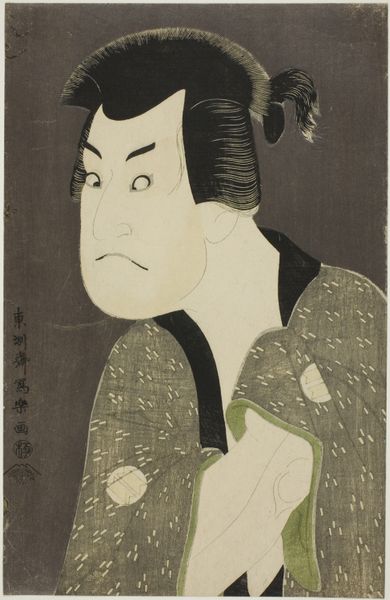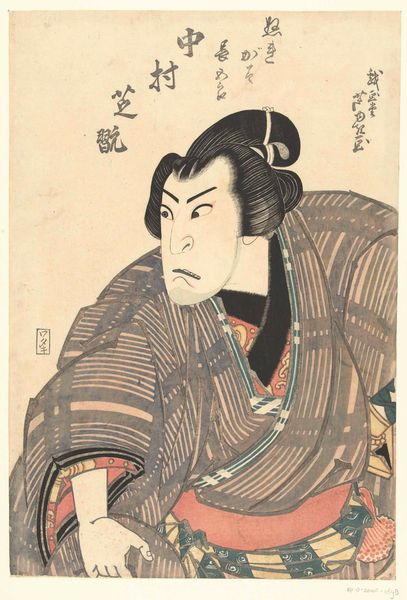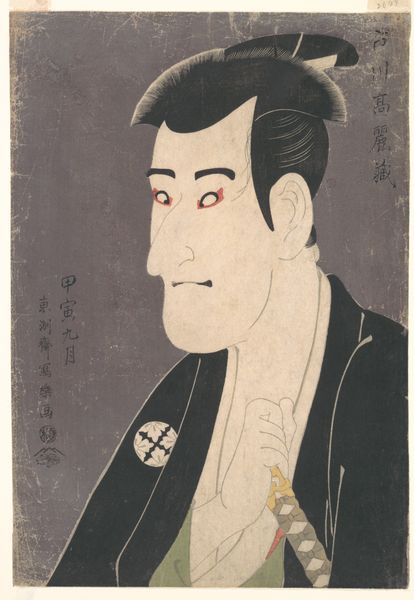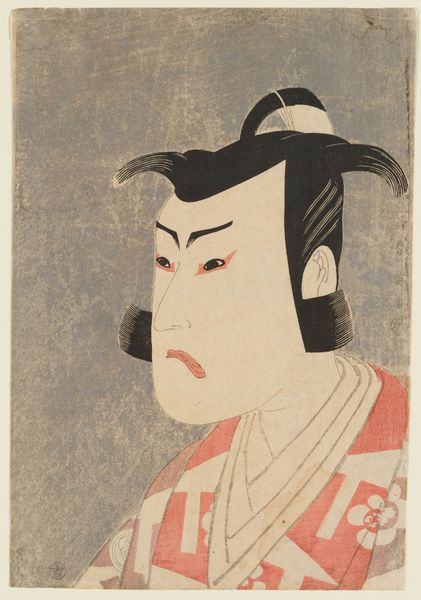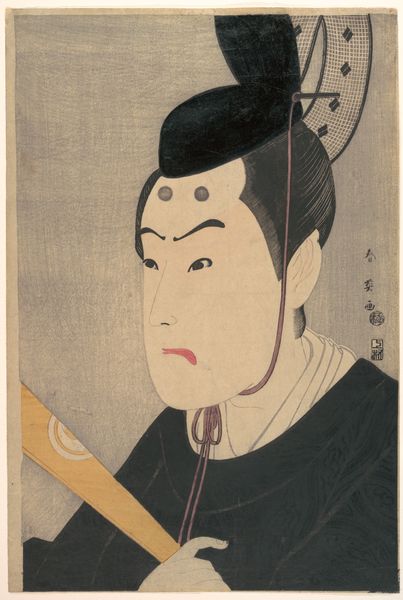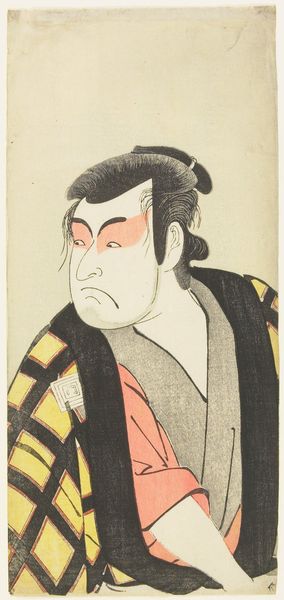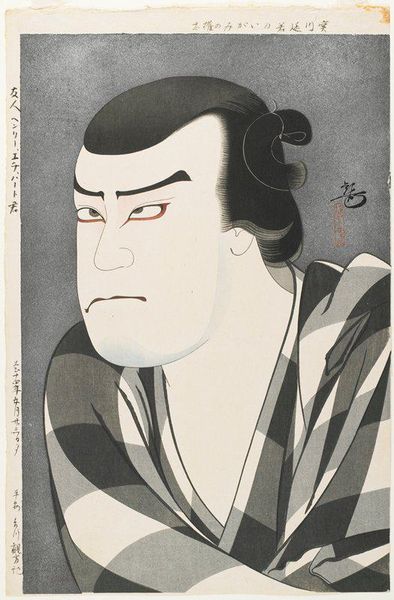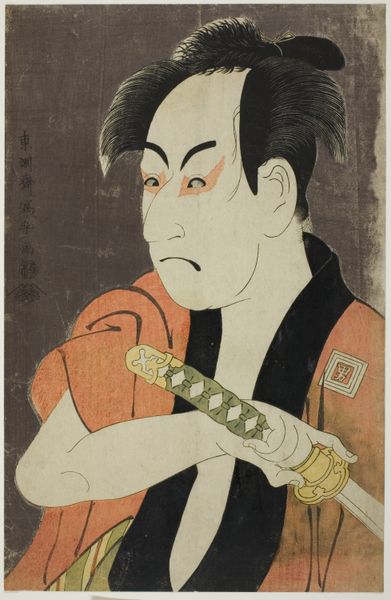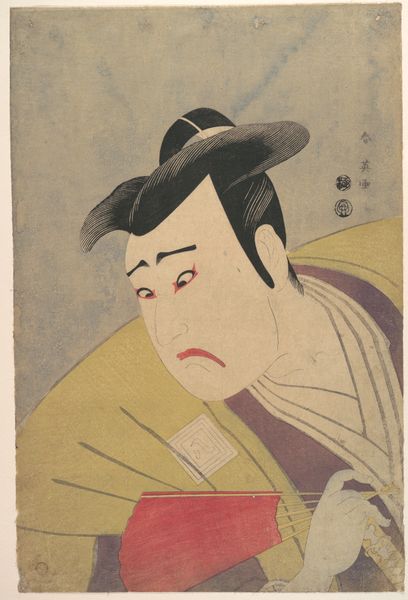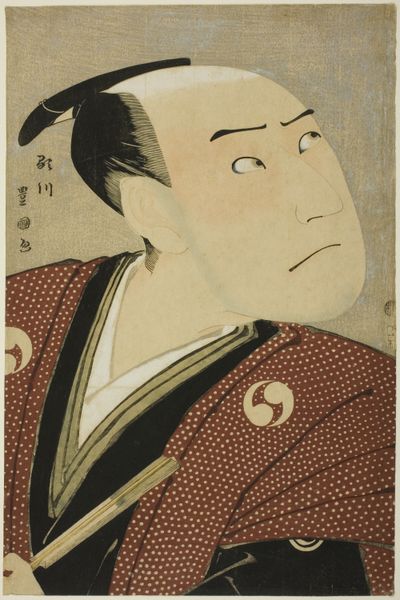
Sakata Hangorō III as Fujikawa Mizuemon in the Play "Hana Ayame Bunroku Soga" 1794
0:00
0:00
print, woodblock-print
#
portrait
# print
#
caricature
#
asian-art
#
caricature
#
ukiyo-e
#
historical fashion
#
woodblock-print
#
genre-painting
#
history-painting
Copyright: Public domain
Tōshūsai Sharaku created this striking woodblock print of Sakata Hangorō III in 1794, capturing the actor in character. Sharaku emerged during the Kansei Reforms, a period of socio-political austerity in Japan. These reforms aimed to reinforce traditional social hierarchies and suppress displays of wealth or extravagance, especially within the merchant and artisan classes who supported Kabuki theater. Woodblock prints such as this one became popular consumer items and were often seen as subversive because they challenged the rigid social norms of the time by celebrating the common culture of the theater. In this image, the actor's intense expression, captured with bold lines, may reflect the social tensions of the time. Researching the plays and the cultural context of 18th-century Japan helps us understand how art both reflected and challenged its era.
Comments
No comments
Be the first to comment and join the conversation on the ultimate creative platform.

